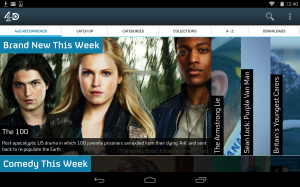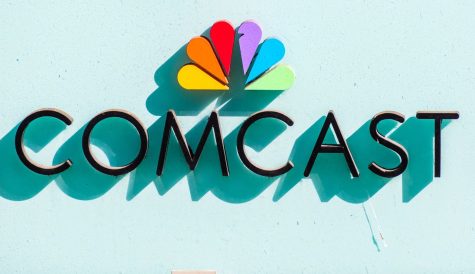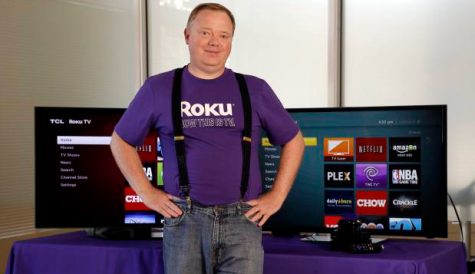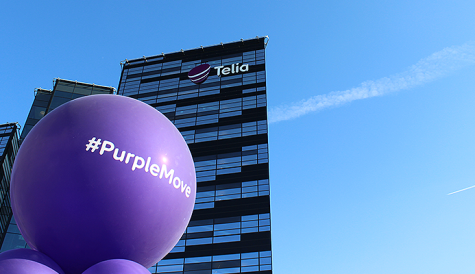Good companions – the second screen and multiscreen monetisation
Understanding of the uses to which people put the different screens they own is still taking shape. From the development of companion apps dedicated to particular shows to the straightforward distribution of linear TV, broadcasters are still experimenting to find out what works – and what delivers revenue. Andy McDonald reports.
A few years ago, social TV and companion apps were the buzzwords of the TV industry, with much time devoted to the topic at conferences and events. Broadcasters and content producers alike were investing in play-along experiences for shows and ways to extend linear content beyond the main screen.
The logic appeared sound – capturing the rising tide of smartphone and tablet usage to engage with audiences and offer them additional content was a step away from tried and tested linear delivery into a brave new digital world. With the likes of Zeebox making a splash when it launched in 2011, thanks in part to the pedigree of its founders – former BBC iPlayer boss Anthony Rose and former EMI board director Ernesto Schmitt – the companion screen space looked set to boom.
Fast-forward to 2014: the hype seems to have died down, with many of the original proponents of the ‘second screen’ space pivoting or disappearing completely.
Second-screen apps
Earlier this year, second-screen TV service Viggle acquired Dijit Media, the firm behind personalised TV programming guide NextGuide, meanwhile, Yahoo! decided to close down its dedicated second-screen TV app IntoNow, with plans to instead integrate the technology into other products like the Yahoo Sports iOS7 app.
In April, Zeebox took the bold move to rebrand itself as Beamly. Announcing the move, Schmitt and Rose described it as an evolution of the service, in line with shifts in the wider second screen TV market.
In a blog post, Rose admitted that since its launch, Zeebox’s TV guide has been “embraced by a geeky male audience” and that its perception has been that of a “new-fangled social TV guide rather than the social network and TV participation experience that was our vision.”
He added that while “Zeebox was all about TV, Beamly is all about the show,” with the app becoming a destination that provides value “even if you’re never in front of a TV.” In essence, with the rebrand, Zeebox shifted the focus away from live interactions and Zeebox’s personalised TV guide, towards TV-focused forums, chat-rooms and content.
“The initial phase of social television and second screen was limited to apps providing a companion experience for audiences while watching TV. However, people’s emotional engagement with TV spans the whole day… Beamly for the first time brings together all of these touch points with TV in a single app,” said Schmitt.[icitspot id=”221981″ template=”box-story”]
In many ways, this shift away from live interaction, or play-along behaviour seems to be echoed by some of the major broadcasters. Back in 2012, the BBC launched a companion experience for the Antiques Roadshow – a long-running series in which members of the public take their belongings to be valued by antiques experts. Announcing the move at the time, the BBC’s then head of IPTV and TV online content, Victoria Jaye said: “We want to creatively renew the audience experience around loved and established programmes, as well as enable brand new formats to flourish.”
Having already at this time completed second screen pilots for Saturday night quiz show Secret Fortune and David Attenborough series Frozen Planet, the BBC said it would test companion experiences around a handful of programmes to explore “the key features and functions that genuinely make watching great TV an even better experience.” In particular it was keen to target “more traditional TV audiences,” in order to drive mainstream take-up.
Since then the BBC has had success with a companion app for singing competition show The Voice, which airs in a Saturday primetime slot. Jaye, now head of TV content, BBC iPlayer, says the app’s usage increased by 42% since between season two of The Voice, when it was introduced, and season three. However, she says the BBC is taking a cautious approach to new developments in this vein.
“It’s fair to say this is still quite a minority sport, but for those audiences that choose to play along with the programme through the apps we’ve created, the retention is really high. Over 85% are staying with it week-in, week-out,” says Jaye. “We were always very cautious in this space because I think the evidence wasn’t there that this was a big audience need. But creatively, where we’re going is fairly consistent with what we’re finding out… We’ve been offering companion content for many years on the Red Button. For us, it was about seeing how that transposes to online or through apps, and we’ll take a case-by-case approach to that, which is what we continue to do.”
Jaye admits that only “a few formats” really lend themselves to synchronous second screen activity, but says the BBC will get better at seamlessly helping audiences find out about programme information while they are watching shows on TV.
“We’ll continue to explore ways technically to surface that content seamlessly if audiences want to draw it up while they’re watching the programme. That would be our future direction of travel. But for the moment, we’re being quite selective about where we build a second-screen experience related to a show, because we’re more interested in the future space where all programmes benefit from the information about them being more readily accessible.”
Programming
One strategy the BBC is pursuing with different sized screens in mind is developing original content for the BBC iPlayer.
According to official BBC statistics, iPlayer TV programme requests from tablets were higher than from computers for the first time in April 2014. For the month, the BBC said that 30% of TV content requested on iPlayer was from tablets, compared to 28% from computers and 18% from mobile devices. The rest of the traffic was made up of TV platform operators, smart TVs, games consoles and other connected devices.
The BBC’s commitment to original content for iPlayer came earlier this year, at the same time as it announced and rolled out an updated version of its streaming service in a bid to offer a “consistent, but optimised,” experience across different screens. The new-look iPlayer was developed using responsive design so that it can be accessed on from different sized screens without the need for separate versions to be built. It also included a simpler and “easier to browse” homescreen, with the entire service designed to be easier to navigate.
While the core of the iPlayer’s content remains the BBC’s broadcast channels and programmes, the new iPlayer also offers an opportunity for new content to be made available. Like synchronous second screen experiences before it, the iPlayer can now be used for “new forms of storytelling,” as well as to nurture new talent.
From March the BBC made three new drama shorts available through the iPlayer. In May it added six original comedy shorts from famous comics including Micky Flanagan, Matt Berry, Frankie Boyle and Bob Mortimer, with plenty more content to follow later in the year – including a trilogy of iPlayer projects from acclaimed filmmaker Adam Curtis.
“The drama is really about new talent – new writing and directing talent being showcased on iPlayer. The comedy shorts are about established comedians, invited onto iPlayer to create comedy that is original and different and very much authored by them, as opposed to conceived through a linear television slot,” says Jaye. “What’s been fascinating is that our audience has sought them out and really enjoyed them in volume. Both the drama shorts and the comedy shorts have made it to our most popular content in iPlayer. Interestingly, many of the shorts have been in the top 10 most-shared content in iPlayer. This is really interesting as it’s the first time we’ve seen fiction in our most-shared iPlayer content, because the most-shared content in iPlayer is usually current affairs [and] issue-based factual.”[icitspot id=”222021″ template=”box-story”]
Overall, Jaye says the BBC is seeing “millions of views” for original iPlayer content, and while the short-form nature of this content seems well suited to mobile access, this was not necessarily by design, with the overall BBC strategy to make the iPlayer easily accessible from all four screens – TV, mobile, tablet and computer.
“What’s important is we’re story-led in terms of how long our content is. The fact is we make long-form content, live content, short-form content – all content available through iPlayer. It’s very much up to the audience how far they want to enjoy that on a mobile or a tablet,” she says.
Original content
Referring to the BBC’s original iPlayer commissions, Jaye says: “We start out with ‘what does the writer want to achieve, what is the story we’re trying to tell?’ If that requires hours to tell meaningfully and powerfully, then we’re happy with that. If it comes in shorter form, that’s fantastic. We’re very much story-led, not device-led.”
In the UK, rival broadcaster Channel 4 has also launched an original content push for its on-demand service 4oD. In its case, the content it is producing is deliberately short-form and deliberately aimed at mobile devices.
“We launched our new shorts hub to meet growing demand for snackable, shareable, content – video that is ideal for watching on the move, on mobile devices, for when there isn’t time for a half hour or hour-long show. At the same time we wanted to create innovative new ways for brand owners to work with Channel 4 to reach young audiences,” says head of 4oD Sarah Milton.
Channel 4 is initially commissioning a diverse range of content, covering genres such as popular science and futurology, gaming, comedy and satire, lifestyle and food. Some will involve well-known Channel 4 talent, and some new talent from the internet world, says Milton. While it’s possible that one of the shorts will subsequently lend itself to a full-length linear adaptation, she stresses that this “is not the primary objective.”
Mobiles, tablets and connected TVs are Channel 4’s fastest growing platforms and accounted for more than two thirds of viewing to 4oD in H1 2014. Milton says that currently most mobile viewing is for full-length programmes, reflecting the content available on the service. “Relatively speaking though, our short-form content does disproportionately well on mobiles and looking at video viewing more generally there has been a rapid increase in viewing to short form on mobile devices, particularly amongst younger viewers.”
Whether smartphones and tablets should be viewed as alternative devices to which broadcasters deliver services alongside TV, as devices to which content must be tailored specifically, as companions to the main screen experience or a combination of all of the above will ultimately depend on individual broadcasters’ experience and resources.




